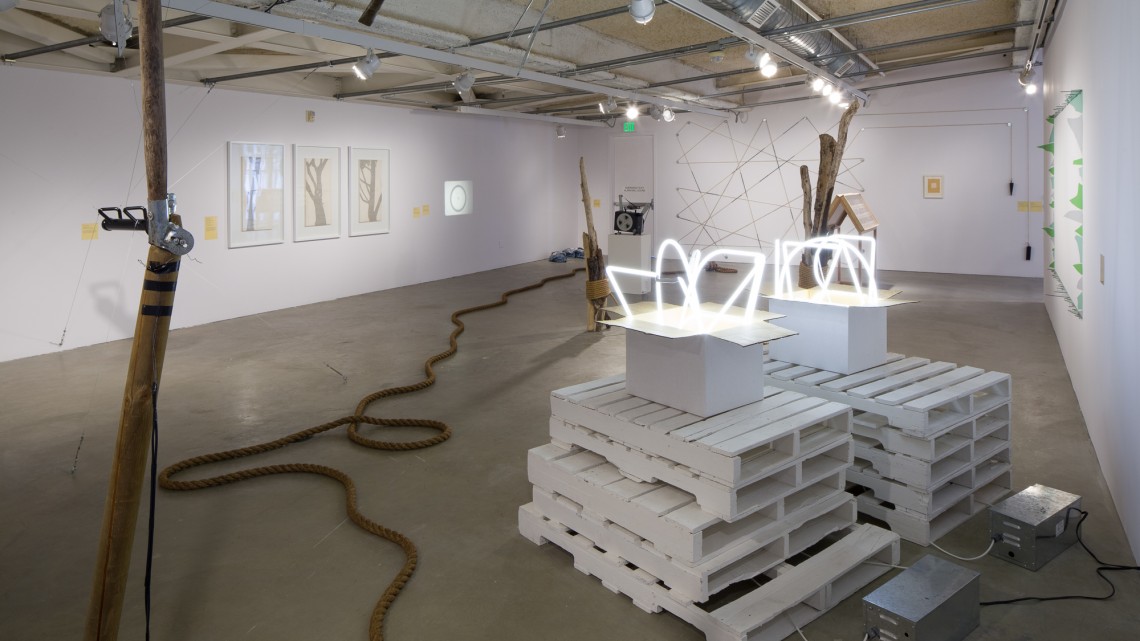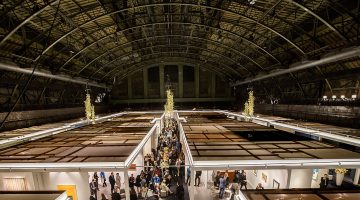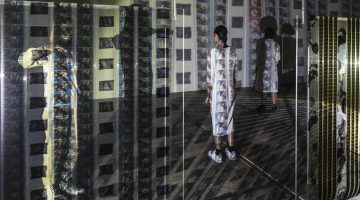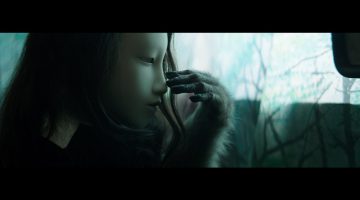To begin, perhaps I can start by asking you to talk a little bit about your formative experiences with art early in your life. What is the art you remember from your youth—and where and how did you encounter it? When did you become aware that being a curator was a possible profession? I know that you initially studied theater direction, and I am curious about the shift in your self-image regarding your career: When did you first identify as a curator of art and begin to seek opportunities in the field? And can you talk a little bit about your early experiences working with artists in that capacity? Did these experiences help shape the approach to curating that you practice now?
One of my first experiences with art that had an impact was seeing Jan Hoet’s documenta 9 in 1992. I was 19, and it was the last big trip we did with our teacher before graduating from high school. I was more intrigued by Hoet as a personality than by his selection of artists for the exhibition. I went to a Rudolf Steiner school, and art played an enormous role in our education. Museum and exhibition outings were very common.
By the time I finished school in Frankfurt, the Museum of Modern Art there had become my second home. It was run at that time by Jean-Christophe Ammann, and right around the corner was the Portikus, the famous Kunsthalle that Kasper Koenig founded. I was mostly interested in theater then and worked at the Theater am Turm, which was part of a larger network of theaters in Europe presenting what later would be called post-dramatic theater. It was once run by Rainer Werner Fassbinder. It was very committed to theater that was interdisciplinary: directors like Jan Fabre, Robert Wilson, Reza Abdoh, Jan Lauwers, the Wooster Group, and Heiner Goebbels. A lot of the younger German directors coming out of the theater program of Hans-Thies Lehmann did their first productions there: Stefan Pucher, René Pollesch, Gob Squad, She She Pop, and more. It was an incredible time.
The person running the theater was Tom Stromberg, a German theater dramaturge and producer, who himself came out of a well-known theater family. He invited me in 1997 to co-organize the theater program of documenta X. I had already worked as an intern at the Portikus with Koenig (on shows devoted to Wolfgang Tillmans, Andreas Gursky, and Boris Mikhailov) and as an exhibitions assistant at Dia in New York, so I was knowledgeable about contemporary art. My projects with Lynne Cooke at Dia included a Juan Muñoz exhibition and her Sydney Biennale in 1996.
Right after documenta X, I became assistant curator for the 1st Berlin Biennale. I was the first to be hired for the undertaking, so I had to find the offices, order computers and telephones, hire staff, and so on. It was great training. In the meantime, I had started studying directing at the Ernst Busch school for dramatic arts in Berlin, where we worked with a lot of former Brecht protégés, like Manfred Karge and Heiner Mueller.
After my undergrad degree, I moved to Amsterdam to get my MA at a newly founded school called DasArts that was conducting advanced research in theater and dance studies and had big ambitions in regards to redefining theater and dance. It was run by Ritsaert ten Cate, the founder of the Mickery Theater in Amsterdam, and was part of the Amsterdam School for the Arts.
All of this is not 100 percent chronological, but we are talking about a period from 1994 to 1999. I spent a lot of time in New York during those years, being involved in theater through a job at Performance Space 122 where I worked as a research assistant for RoseLee Goldberg. But also being fully immersed in the art world there, mostly through the job at Dia and by hanging around galleries, sneaking into openings, et cetera.
Two of my more memorable experiences were seeing Felix Gonzalez-Torres’s first show at Andrea Rosen Gallery and seeing an Alex Bag show at 303. As my final project for my MA, I curated a show—my first exhibition ever. It was called Contemporary Self-Portraits and took place at the Sean Kelly Gallery in 1998 (when it was still in SoHo). I was 24 years old and thought I had it all figured out. It was focusing on more abstract notions of self-portraiture by artists such as Sarah Sze, Sean Snyder, and Vibeke Tandberg. This brings us all the way up to the Berlin Biennale, which was a big change and shift for me as it was really the start of my career in the visual arts. Yes, the training in theater had and still has an enormous influence on my work.
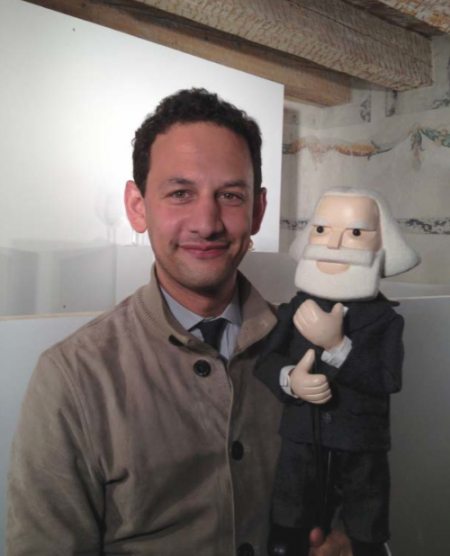
Jens Hoffmann holding a Karl Marx puppet by Pedro Reyes, 2013. Photograph by Pedro Reyes.
Indeed, maybe we can talk a little bit about theater now, inasmuch as I wanted to ask you about how you characterize your own curatorial approach. What jumps out to me in what you just mentioned is the many experiences you had with curators with strong individual perspectives in their curatorial discipline. One might even say that in some sense Jan Hoet, Kaspar Koenig, Lynne Cooke, and RoseLee Goldberg practice a kind of “auteur” curating.
(Not to mention the theater directors you list.) This seems especially borne out of your reminiscence that it was the force of Hoet’s personality more than the individual artists in documenta 9 that made an impression on you. Do you think that auteur curating is the right term to describe these figures? If not, do you have another way to describe some of the commonalities between them—or maybe they are more different than similar? In any event, do you consider yourself as a curator with an auteur approach—i.e., that an exhibition is as much an expression of your personality—or perhaps an incarnation of your thesis—than anything particular to do with the specific art in the exhibition? If so, do you think this perspective relates to theater, so far as a director helps organize a performance by actors specifically chosen for their appropriateness for a given script? Or is this totally off the mark?
Let us talk first about the curators I mentioned and the idea of curators as “authors.” Jan was a very intuitive person. I had the chance to get to know him a little more toward the end of his life, and he was a big emotional force. He refused to be rational or intellectual in any way; it was all about what his gut told him. Kasper was a bit similar but a slightly more grumpy version. Lynne, on the other hand, is a very academically rigorous curator who writes, researches, places work into larger historical contexts.
None of them are your average American museum curator, but I would not describe even one as an author-curator. An author-curator’s career develops like an artist’s in that she or he follows particular themes or subjects over many years, and each new exhibition clearly develops out of previous ones, following a particular examination, a form of curatorial evolution and development. Most important of all is a signature style, not only in terms of the type of show but also how the exhibitions are set up. They are somehow recognizable because of certain characteristics they carry.
I have spoken and written quite a bit about the idea of the curator as author and in particular how François Truffaut spoke of certain filmmakers as authors. I am interested in the idea of the curator as author and for a very long time I would have said that that is how I would understand myself, but now I tend to think of myself more as a curator-as-educator. Yes, the exhibition as an expression of my subjectivity is important, but at the same time, working on shows that reach more people than just a few art-world insiders is a big priority. To do intelligent shows with mass appeal is what I am after. I am not so much interested in teaching an agenda, a specific program, or a curriculum, but more about showing the audience the possibilities of thinking outside the box and how to think critically about their lives.
There is a certain political aspect to my work as well. I am definitely influenced by Bertolt Brecht, and it comes up in all my shows in some way. Another aspect that comes from theater is my strong interest in dramaturgy: the installation and flow of an exhibition, different speeds, moments, juxtapositions, the architecture of the space, and how the audience encounters that. I don’t want it to be entertainment, but I also don’t want to preach.
There are also more obvious connections between directing and curating, such as working collaboratively with a group of people. Developing a vision for a production on stage is not so different from doing it in a gallery. I always speak of “staging an exhibition.” I already mentioned Truffaut; filmmakers and cinema are important influences on my work and maybe help demonstrate how I see my work: Rainer Werner Fassbinder, Pier Paolo Pasolini, Jean-Luc Godard, Peter Watkins. All directors for whom politics and aesthetics go hand in hand.
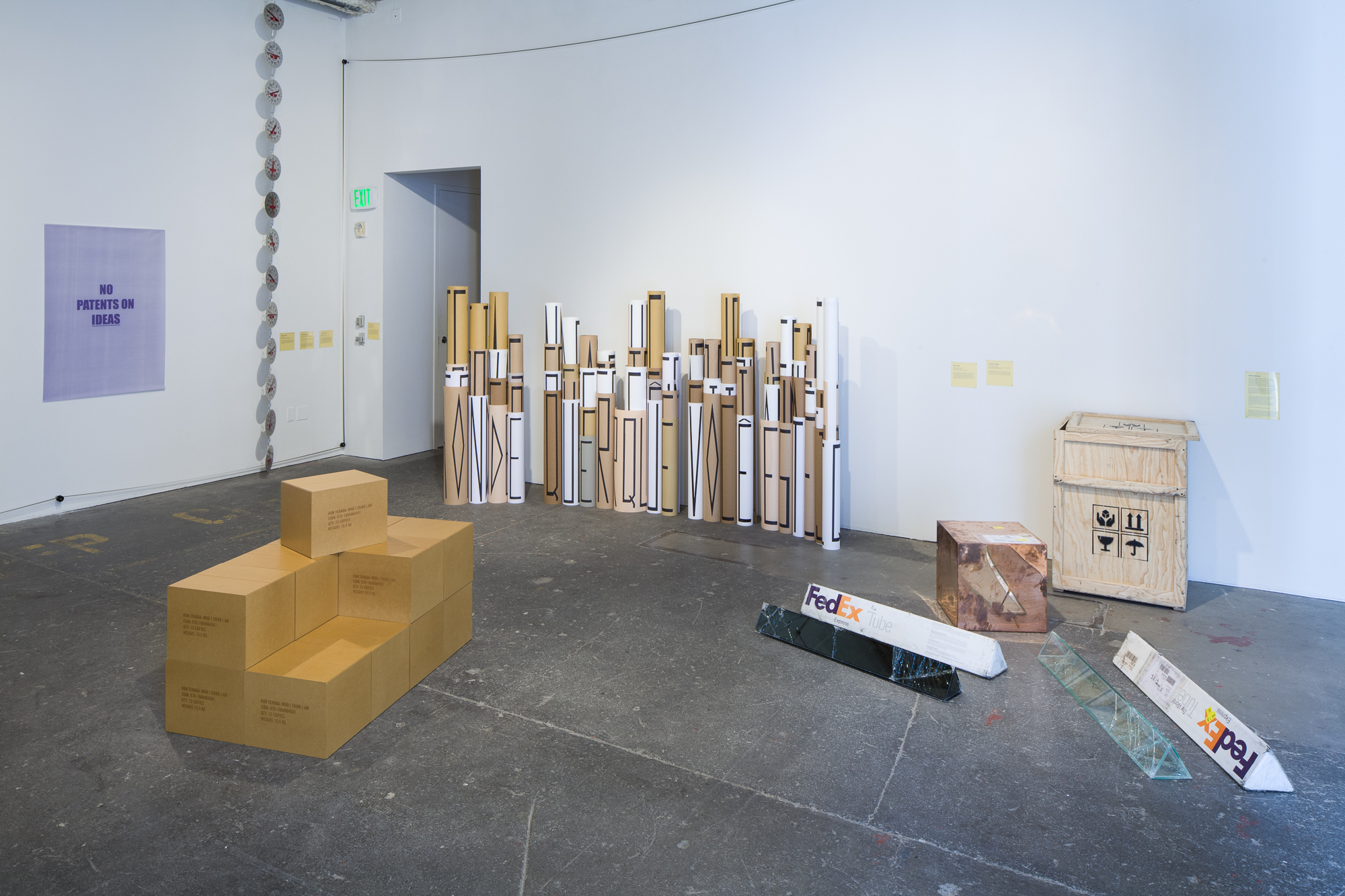
When Attitudes Became Form Become Attitudes, 2012. Installation view, CCA Wattis Institute for Contemporary Arts, curated by Jens Hoffmann. Photograph by Johnna Arnold.
I find the shift you describe in your own aspirations as a curator very interesting. You mention a move away from a practice in which the curator is an author toward one in which the curator is an educator. Can you talk a little bit more about this in practical terms? Do you have a sense of why your work has developed thus? Are there specific ways in which this manifests itself in how you conceive of your exhibitions—do shows now look less “yours” than shows you’ve done in the past? (I would argue that the portfolio of exhibitions you organized during your tenure at the CCA Wattis Institute had a very strong, identifiable curatorial aesthetic.) Has this affected the kinds of artists you choose to work with? How does this emphasis on teaching and reaching a larger audience affect your choices of artwork, exhibition installation, catalogue design, public programming, and all the other things that you manage in and around an exhibition? Can you give an example of an exhibition you organized in the past that you might do differently today?
At the outset of my career I was interested in exhibitions that were self-reflexive, meaning, the audience was told they were looking at an exhibition, and the shows prioritized display, referenced other people’s exhibitions, laid out the curatorial research, or were even exhibitions about other exhibitions. That was early on. But the self-reflexivity has stayed. I connected that sort of conceptualization of curating to larger themes I was interested in, particularly literature, storytelling, and narratives that asked larger questions of human existence. I thought if my exhibitions could contribute to a diversification of exhibition making, introduce new forms and types of shows, then visitors would understand that the gallery space, just like the theater stage, is not that dissimilar to the world we live in, in that it is about make-believe, it has its rules, traditions, customs, cultures, et cetera, all of which need to be questioned.
Most of my exhibitions have been very context specific. They are the results of looking at the history and the current realities of the place they take place in. In recent years I have worked in positions that have asked for a stronger responsibility toward a critical engagement with society. We are all trapped in particular systems that we need to break out from, and I hope my exhibitions can trigger thoughts that will help audiences think critically about life.
My shows still “look,” “feel,” and “read” like the ones you’ve seen in the past, but I spend much more time now thinking about mediation and how to bring all elements of an exhibition to a larger audience. This can happen via wall texts, longer captions, tours, presentations by participating artists, apps, micro-sites, brochures, and more in-depth publications. My goal is to make shows that speak to very diverse audiences: the academic, the art hipster, the casual museum visitor, and beyond. I want to hold a conversation with all of them simultaneously.
I am very much a learning-by-doing kind of person, and each show gives me the chance to try something different and new. If I repeat myself, I don’t want it to be because I’m running out of ideas, but because I am trying to understand something that I did not completely “get” with just one show. The idea to redo When Attitudes Become Form or Other Primary Structures, for example, I was interested in doing shows about iconic exhibitions that wouldn’t be straight remakes—that would speak about history and how history is written, and how it’s subjective, and how we fill gaps of not-knowing. This in turn means the future is also subjective, meaning we can control what will happen in the years to come, we have a chance to deal with poverty, ecological problems, war, and many other issues that distress people today.
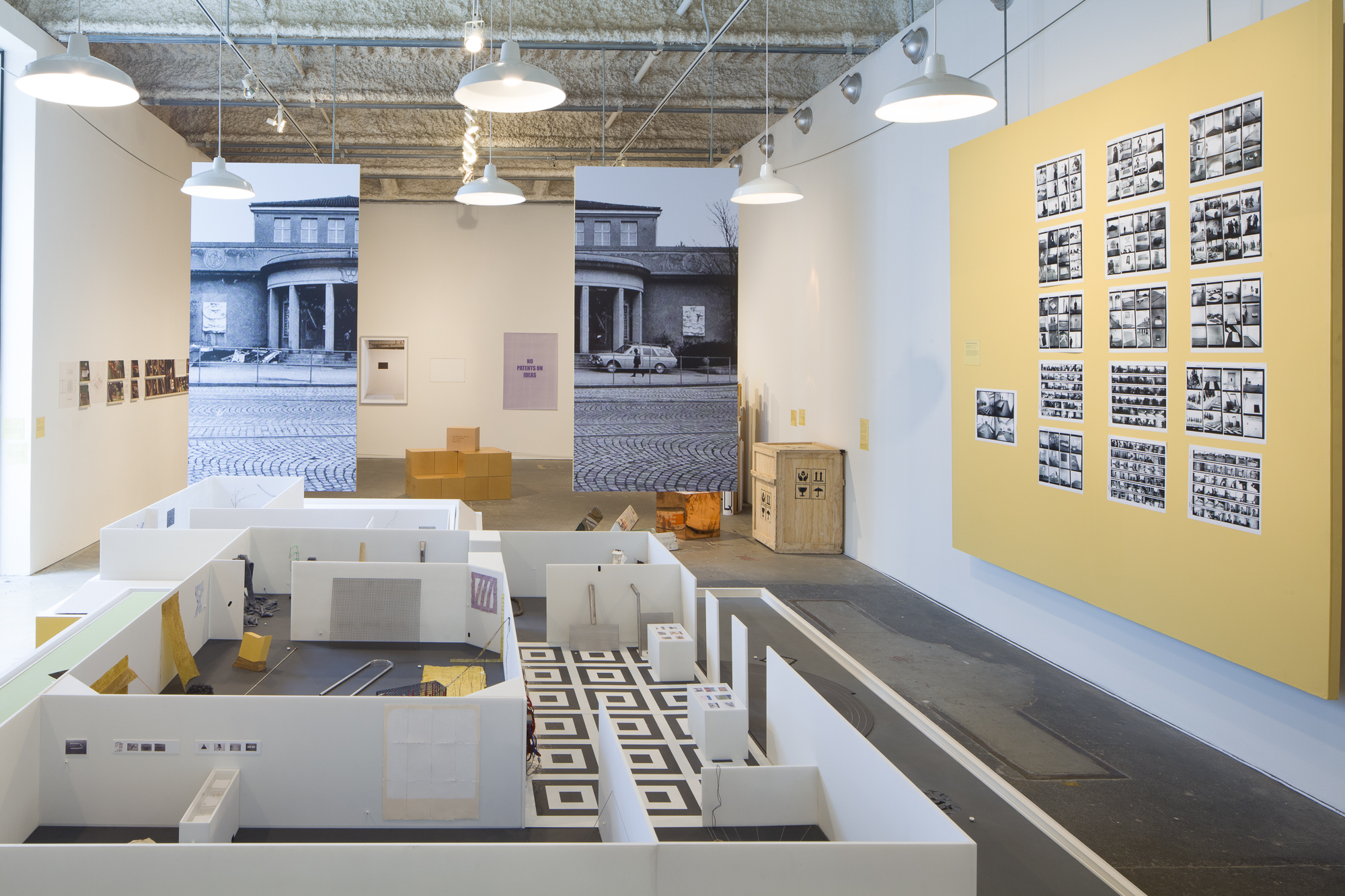
When Attitudes Became Form Become Attitudes, 2012. Installation view, CCA Wattis Institute for Contemporary Arts, curated by Jens Hoffmann. Photograph by Johnna Arnold.
I’d like to continue with the idea of a Brecht-inspired, politicized curatorial practice for a moment. Can you elaborate a bit about the ways in which you think exhibition making can deal with issues like poverty and ecological problems, to stick with your examples? While, of course, there are different audiences for art, the type of people who have the time, means, and desire to engage with exhibitions is still a very small fraction of those who might be politically mobilized to “think for themselves.” And, needless to say, the audience for art is still, by and large, a privileged cohort. Are you thinking of a turn to directly politicized curation, or are you referring to something more along the lines of exhibition practice as a type of pure research? And, how does your interest in accounting for the context of exhibitions manifest itself, exactly? Surely, the context for a museum exhibition in New York City creates different opportunities than for one for a biennial in Shanghai. Can you perhaps give some examples of how context specificity has inflected your politicized address to audiences?
No, I do not mean at all that exhibition making or art should address poverty or pollution. What I mean is that we as humans, as a global community, have to address those and many other issues. Art is not the place to speak about this. There is always another layer, which is the factor of form and aesthetics. Art is not activism. The audience who comes to our museum is actually quite different than that privileged cohort you are talking about, which you would find more at the New Museum, I think, where art is turned into a lifestyle for downtown creative types.
The Jewish Museum, where I am now working, is distinct in that the thousands of members we have and need to address and communicate with are not art insiders but culturally interested people from all walks of life. Also interesting is the incredible history of the museum, in particular its exhibitions in the 1960s and 1970s. The first show I did here, Other Primary Structures, was responding to the history of the museum as well as to the reality that it has been very Western/Northern-centric, so I deliberately included artists from Africa, Asia, Latin America, and Eastern Europe to signal that the museum will be much more global from now on. It was quite a political show, as it was thinking about histories versus history, Eurocentrism versus global multiculturalism.
I am really glad you raised the idea of a global view of art and aesthetics within our discussion of context specificity. Since the issue of SFAQ in which this interview appears is loosely themed around Central and South American art, I was wondering if you could comment on the different ways in which art made in these areas is received in different contexts—perhaps most specifically drawing on your experience working on the east and west coasts of the United States, as well as in other parts of the world. Is it is possible to generalize about how Central and South American art is seen in different contexts, and, if so, can you sketch what you have seen to be the different inflections? Are there distinct ways in which your relationship with the region informs your curatorial practice?
It is, as you say, hard to comment on art coming from an area so large as Central and South America, which has so many different countries and cultural contexts. Coming from Costa Rica, it has always been very natural for me to look at art from Latin America, and I have worked with Latin American artists since the very early stages of my career. On the west coast, especially in Los Angeles and San Francisco, art from Latin America is far less exotic than it is on the east coast or in Europe simply because California has a history that has engaged much more with Latin America, not only because of immigration but also historically through being part of Mexico until the middle of the 19th century.
I don’t think there has ever been a big interest in art from Central America. (I do not understand Mexico as part of Central America.) Very few artists from Central America have shown outside their home countries compared to artists from Argentina, Venezuela, Colombia, or Brazil. What has always been interesting to me is that even in South America, there are countries that many Latin American curators have never traveled to, for instance Paraguay, Bolivia, Ecuador, or even Uruguay, not to mention Guyana or Surinam. Also artists do not travel much from country to country. Information about the art world in Colombia will most often arrive in Brazil via the United States or Europe.
So, I think we are still at a very early understanding of how to look at contemporary art from that region. But a lot is changing. Brazil is very interesting to me since it is such a melting pot of European cultures, African influences, and the indigenous population. One finds traces of this history all over the continent. I am myself part Afro Caribbean, European, and indigenous American, and this of course affects my interests related to art and culture. In 2009, I co-organized the 2nd San Juan Triennial in Puerto Rico, a large-scale exhibition focused specifically on art from Latin America and the Caribbean. In preparation for that show, working with a curator from Venezuela, Julieta Gonzalez, and one from Brazil, Adriano Pedrosa, I did a lot of research in the region and it was the start of a much deeper relationship with artists from that continent, which continues through today. What you will see when looking back at the last 20 years of art production in Latin America is that certain countries are being focused more on than others: Mexico had a boom, Brazil had a boom, now Colombia has a boom. Many people are excited about art from Argentina at the moment, which will be the next boom.
Can you speak more specifically about some of the South American artists you have been thinking about as a result of the research you were doing for the San Juan Triennial? Who hasn’t yet received the attention they deserve? Also, can you tell us about the Colombian “boom” you describe, as well as perhaps what lies ahead for a broader international reception of Argentinian art?
Around 2009 I did a lot of visits to Bogotá and started to get to know its scene more and more. A number of artists I started working with for the San Juan Triennial that I have followed and worked with since include Johanna Calle, Mateo López, Nicolas Paris, Gabriel Sierra, Danilo Dueñas, Bernardo Ortiz, Nicolás Consuegra, Felipe Arturo, Carolina Caycedo, and Milena Bonilla. Also around that time I started visiting Buenos Aires more and met artists I subsequently showed in San Francisco and elsewhere, including Nicolás Robbio, Jazmin Lopez, Edoardo Basualdo, Adrián Villar Rojas, Jorge Macchi, and several others. Adrián Villar Rojas in particular has received an enormous amount of attention, with an upcoming solo show at Marian Goodman in 2015, which is provoking even more interest in artists from that country. I have to admit that my deepest knowledge in regards to art from Latin America is around Mexican and Brazilian artists. I have worked in both countries and shown many artists from there over the last 20 years.
Can I zoom out for a moment to ask you a more theoretical question, one that might even be a bit contentious? You mentioned earlier, by way of negative definition, a contemporary cultural trend, prevalent in some museum programs, but also seen more broadly, in which art is turned into (or reduced to) a kind of lifestyle. To my mind, this attitude seems endemic to contemporary culture today, even beyond art: DJs, personal shoppers, fashion editors, et al. have appropriated the position of “curating” as a kind of marketing strategy, and often frame it as postmodernism’s default form. (In the absence of originality, all we can do is remix, etc. . . .) Can you comment on this trend, and also maybe talk about where the edges that separate the serious art curator and the lifestyle art curator get fuzzy—like, for example, when curators collaborate with commercial galleries, or even author texts in auction catalogues—essentially working as functionaries of a hyper advanced capitalism for the luxury market?
I notice among younger curators, writers, and even artists the desire to be part of the art world not necessarily because of an interest in art or art history, but primarily because of a lifestyle decision. The art world is seen as glamorous, and therefore a desirable place to be in. Museums tap into that and sell it to those who are not in the arts professionally but want to be somehow associated with it. Curating as a term and activity has been completely devalued and today describes simply the act of making a choice or a selection: among items on a menu, the lineup of songs in a club, window dressing, et cetera.
Curating is obviously much more than just making a selection; it’s about creating a context and developing an idea, installing works, conceptualizing a publication, and so on. I am interested in the idea of selecting, though, and it brings us back to the question of authorship. An author is someone who makes choices, chooses words or artworks to develop and articulate an argument, and what is important here is the index and the criteria that are developed in order to make these choices. Because if you don’t have that index, how can you make choices?
Perhaps it could be interesting to talk about how to think of curatorial quality. How do I know a curator knows what she or he is doing versus just distributing a group of works randomly in a space? There is such a difference between someone picking five works from the studios of some artist friends and showing them in an apartment gallery versus me doing a historical, global overview of minimalist art in a museum, yet both are called curating. My solution to this dilemma has been to not call myself a curator anymore, but an exhibition maker. I also like the term “making.” It sounds more hands-on and creative.
That is a really helpful distinction, I think, between curator and exhibition maker. It seems in making that distinction, as well as by foregrounding the “making” aspect of what you do, you are underscoring your work’s creative nature. This may seem a polemical question, but can you talk a bit about the differences between the “making of exhibitions” that you do and the “making of exhibitions” that artists do? Along these lines, I also wanted to bring up that a couple of years ago the name “Jens Hoffmann” appeared on the list of artists represented by 303 (one of the most significant galleries for contemporary art in New York). When you click on the link to learn more, the website returns a “404 Not Found” error message. Can you unpack this a bit? Was this an attempt to productively blur the lines between different types of cultural producers? I, knowing you, take it as a lighthearted and ironic turn at the curator-as-artist posture . . .
I should mention that I have organized exhibitions for commercial galleries. I never had an issue with the commercial element of the art world—only the element that is uncritical and not reflective. For many years people have said that I am an artist who uses the medium of the exhibition like someone else uses photography or painting. It was very important to me to not be understood like that, as my desire was to diversify curating and talk about exhibition making, not art making.
I understand the concern, though, and I think that some of my past shows have been fine balancing acts of creative curating that were also inspired by artists. I think my name is still on the list of artists of 303 Gallery. This came up as a result of a lot of different conversations and situations. The owner, Lisa Spellman, thought of my work as art and said she wanted to represent me, and I told her that it wasn’t possible. But then I began thinking, what if a gallery did represent a curator? I agreed to have my name on the list. I was interested to see how people would react to a curator being represented by a gallery. In a very simple little gesture, a mixing of ideas between curating and art making, blurring the lines between creative practices. I eventually curated a show for 303 called Marxism in 2012.

Jacob and Jens Hoffman, Marxism, a comedy, 2012. Installation view, 303 Gallery, New York. Courtesy of the artists and 303 Gallery.
Thanks so much for all your time and attention. It’s been a pleasure talking with you. Any plans to come back to the Bay Area soon?
I spent five very good years in San Francisco and the city is special to me in many regards. The art scene is strong in the Bay Area. Fantastic artists that I admire very much have come out of San Francisco, for instance Bruce Conner, Jess Collins, Lynn Hershman Leeson, Anna Halprin, and many others. I wish I could come back at some point. One never knows.
